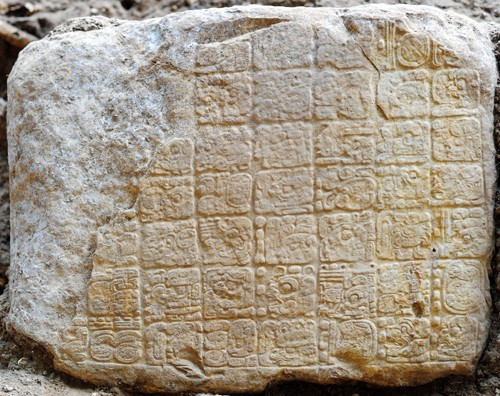Mayan Calendar's Second Reference Discovered in Guatemala Slams Doomsday 2012 Prophecy
The significant discovery that slams the belief that the apocalypse will happen in 2012 was made at the ancient Maya city of La Corona in Guatemala.

A new Mayan document, inscribed some 1,300 years ago, talks about a date in their calendar (it translates to 21 December, 2012, in the Western calendar). However, it does not imply that the date marks the end of the Mayan calendar and the end of the world - a doomsday prophecy that nearly 15 percent of people worldwide believe in, according to a poll.
This significant discovery claims to be rubbish rumours a global apocalypse will take place sometime this year and was made at the ancient Mayan city of La Corona in Guatemala. The discovery provides only the second known reference to the "end date" for the Mayan calendar as being 21 December, 2012. The discovery and its implications were reported on by archaeologists at Tulane's Middle American Research Institute (MARI), who led the excavation project at the Mayan ruins of La Corona, during a press conference at the National Palace of Culture in Guaemala City on Thursday.
End of Mayan Calendar
The only known inscription depicting the end of the Mayan Calendar in 2012 was found on Monument 6 from Tortuguero, an ancient Mayan city in Mexico.
The Mayan calendar consists of several bak'tuns (periods of time), each containing 144,000 days. It is believed a certain date in the calendar (21 December, 2012) marks the end of the 13th bak'tun and popular belief has long suggested that is the date of the end of the world. However, new studies and discoveries like the one above suggest a more prosaic alternative - it simply means the 14th baktun is set to start.
"This new evidence suggests that the 13 Bak'tun date was an important calendrical event that would have been celebrated by the ancient Maya; however, they make no apocalyptic prophecies whatsoever regarding the date," MARI's director and co-director of the excavations, Marcello A Canuto, said.
Mayans more Political than Apocalyptic
At the Mayan ruins of La Corona, archaeologists have recovered 10 stones with hieroglyphic writings on them and a staircase with over 264 hieroglyphs, making it one of the longest ancient Mayan texts known, and the longest in Guatemala.
According to Dr David Stuart, the director of the Mesoamerica Center of the University of Texas at Austin and the man who deciphered the staircase inscriptions, the texts relate to the political history of La Corona, spread over 200 years. Some stones even show several Mayan rulers accepting tribute, dancing and preparing to play a traditional Mayan ball game - which, incidentally, some believe was a precursor of the modern game of football.
"This text talks about ancient political history rather than prophecy," Canuto asserted.
No World Ending in 2012
In yet another recent discovery - this time in the Mayan ruins of Xultunin Guatemala, in May - the oldest known Mayan calendar, dating to the early 9th century CE, was unearthed. The dates on the calendar suggest activity for some 7,000 years in to the future, contradicting the notion that the Mayans predicted the end of the world in December 2012.
© Copyright IBTimes 2025. All rights reserved.




















